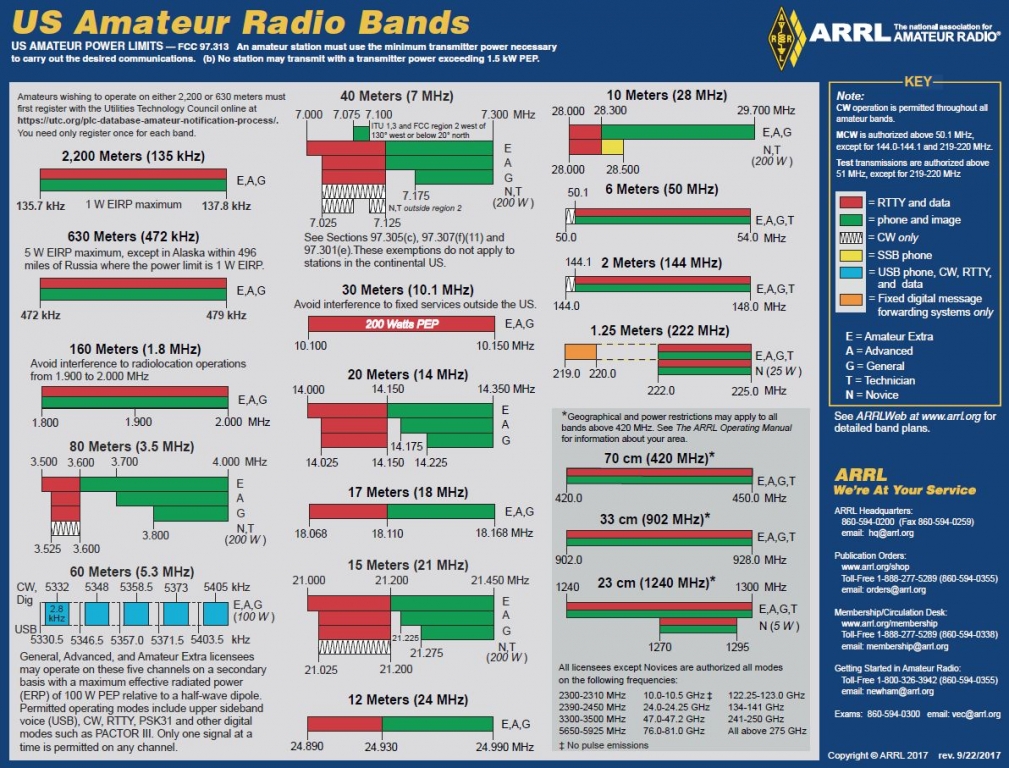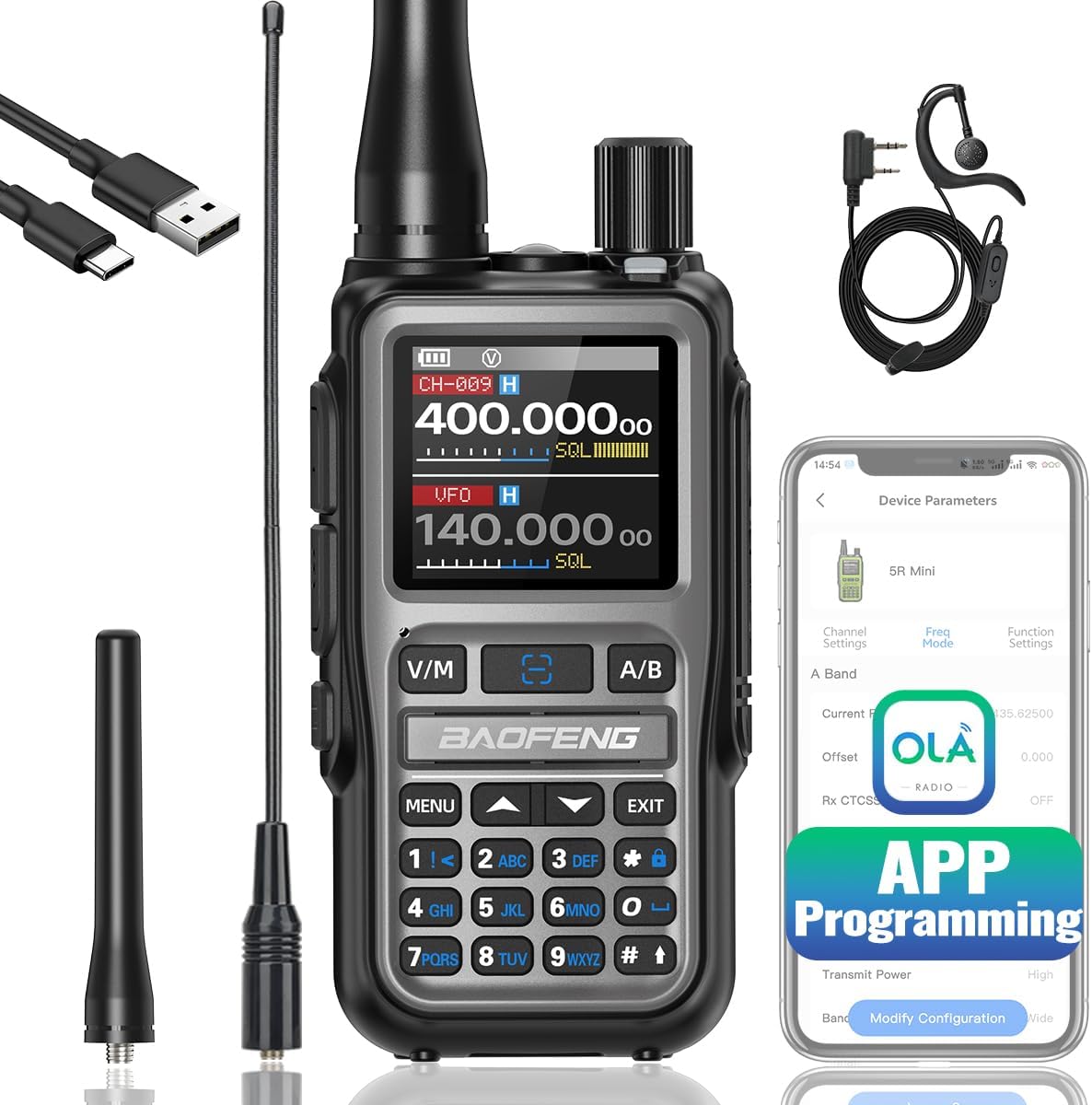
High frequency ham radio is one of the most exciting and diverse areas of the amateur radio hobby. Covering the frequency range from 1.8 MHz up to 30 MHz, HF allows operators to communicate across continents, chase distant signals, experiment with propagation, build antennas, and take part in a huge variety of activities that simply are not possible on VHF and UHF alone. HF is the heart of long-distance radio, and the more you explore it, the more it opens up.
Introduction to HF and Its Special Characteristics
HF is unique because it can take advantage of the ionosphere, a layer of charged particles high above the Earth. Unlike VHF and UHF signals that mostly travel in straight lines, HF radio waves can reflect off the ionosphere and return to Earth far beyond the horizon. This process, known as skywave propagation, makes it possible to talk to someone thousands of miles away with a modest radio and simple antenna.
HF activity can change from hour to hour, season to season, and year to year as solar conditions shift. That variability is part of the fun, because no two days are quite the same. HF invites experimentation. It encourages learning. And it rewards those who pay attention to changing conditions.
What HF Is Used For in the Ham Radio Hobby
HF supports a broad set of activities that attract operators of all skill levels.
Long Distance DXing
One of the most popular uses for HF is DXing, the pursuit of long distance contacts. Because HF signals reflect off the ionosphere, reaching Europe, Asia, South America, Africa, or Oceania from the United States is achievable even with a simple dipole antenna. DXing challenges operators to learn about propagation, gray line enhancement, sporadic openings, and band timing.
Contesting
HF contests take place throughout the year, ranging from small regional events to massive worldwide competitions. These contests test an operator’s operating speed, efficiency, and station setup. Each HF band behaves differently during contests, and knowing when to shift bands can be the difference between an average score and a top-tier performance.
Digital Modes
Modes like FT8, PSK31, RTTY, and others are extremely popular on HF. FT8 in particular has become a major tool for monitoring propagation and making reliable long distance contacts even when conditions are poor. Digital modes require minimal power yet achieve impressive distances.
Voice and Ragchewing
Single sideband voice remains a classic method of HF communication. Operators often find friends, join nets, and spend time in extended conversations known as ragchews. These nets can focus on emergency communication, technical advice, or general conversation.
CW (Morse Code)
While not required for licensing anymore, Morse code is still widely used on HF. CW signals penetrate noise better than voice and are more efficient for long-distance work. Many operators enjoy the skill and rhythm of practicing code on HF bands.
Portable and Field Operations
HF is popular for camping, field activations, summits, and portable work. With modern lightweight radios, operators can set up portable HF stations almost anywhere and enjoy the magic of long range communication from remote locations.
Emergency Communications
HF plays a vital role in emergency communication because it can reach across states or entire regions without relying on internet or repeaters. Many emergency groups still practice HF communication as part of a prepared response system.
Detailed HF Band Breakdown and Best Uses
Each HF band has its own personality. Knowing when and how to use each one helps operators get the most from their radio.
160 Meters (1.8 to 2.0 MHz)
Often called the top band, 160 meters behaves more like a mix of HF and low frequency. It offers excellent nighttime range, especially in winter when noise levels are low and the ionosphere supports longer paths. Antennas for this band tend to be large, but the challenge is rewarding. Best for nighttime regional and long haul contacts.
80 Meters (3.5 to 4.0 MHz)
A prime band for nighttime operation. It offers excellent coverage for local and regional communication and can also achieve long distance contacts when conditions are right. Noise levels can be high in summer, but winter provides outstanding operating conditions.
60 Meters (5 channels from 5330 to 5405 kHz)
This shared band offers dependable medium range communication even when other HF bands are poor. It is popular for emergency work and for stable regional communication. Operating is channelized, so the band feels different from others.
40 Meters (7.0 to 7.3 MHz)
This is one of the most reliable HF bands, providing both daytime and nighttime usefulness. During the day, 40 meters supports regional communication. At night, it can reach across continents. Many nets operate on 40 meters, making it versatile and lively.
30 Meters (10.1 to 10.15 MHz)
A peaceful band used mainly for CW and digital modes. It offers excellent long distance performance and quiet operation. Daytime and early evening are particularly strong times to use this band.
20 Meters (14.0 to 14.35 MHz)
This is the flagship DX band. When solar conditions are moderate or high, 20 meters can remain open nearly 24 hours a day. It is often the most reliable band for contacting distant continents. Voice, CW, and digital modes all flourish here.
17 Meters (18.068 to 18.168 MHz)
Part of the newer WARC bands, 17 meters avoids contest interference and gives operators a clean place to work DX. It is excellent during daylight hours and often supports long path propagation. Signals tend to be strong and clear.
15 Meters (21.0 to 21.45 MHz)
Another high performance DX band, especially during periods of high solar activity. During good conditions, 15 meters becomes lively with worldwide signals. It behaves similarly to 20 meters but with a slightly higher frequency advantage during solar peaks.
12 Meters (24.89 to 24.99 MHz)
A quieter band that does extremely well during strong solar cycles. Like 17 meters, it avoids contest congestion. When open, it can provide fast and exciting DX contacts.
10 Meters (28.0 to 29.7 MHz)
One of the most interesting HF bands because it can go from silent to explosive within minutes. During good solar conditions or sporadic E events, 10 meters can offer global communication with very low power. It supports FM, repeaters, SSB, CW, and digital modes. Summer and winter sporadic E seasons bring surprising short-skip propagation.
HF is more than just frequencies. It is a dynamic, ever-changing world filled with challenges, discoveries, and opportunities to connect with people across the globe. Each band has its own personality, and learning when and how to use them is part of the excitement. Whether you enjoy contesting, building antennas, chasing DX, or simply talking with hams near and far, HF opens the door to a lifetime of exploration.
No matter your equipment or experience level, HF always has something new to offer.




